It’s spud season in Idaho. A few weeks of stale leaves and fresh dirt turning over by way of tractor and till. I’ve witnessed potato harvest for two decades, but this year the process has more intrigue. There’s an emerging connection between the farm that feeds us and the fish that entertain us. What’s coming out of the dirt where I live could end up thousands of miles away in the waters where I chase tarpon. And the link between the two is oysters.
Oysters
The first time I see an oyster spit, I’m fishing for tarpon while standing barefoot on the front of Steve Beare’s boat in Florida. I rarely fish barefoot for trout, but for tarpon I do. That’s how I know when I’m stepping on the pile of line at my feet. I need all that line in the water, but I stop throwing it out when Beare shows me the shell of a spitting oyster. We’re close to structure. A dock. The oyster is claiming the dock as reef and cleaning water as it spits.
“I’m not qualified to tell you what oysters do, scientifically,” says Steve Beare, On Island Time Charters captain. “But I will tell you, as an inshore fisherman, they are vital.”
Spitting oysters are vital because they filter water. Clean water is key for fisheries. Spitting oysters also make more oysters (larvae) called spat. More oysters make a reef. More reef attracts more fish. The kind of fish anglers are after.

“If you’re fishing for tarpon, snook, redfish and black drum, you’re going to find your way around oysters beds,” Beare says. “That’s where the fish you’re targeting are eating.”
Potatoes
Oysters are drowning in decades of decline. The population drops as storm intensity grows. With hurricanes hitting the coast harder, the timing of oyster loss couldn’t be worse, but it’s motivating creative ideas.
Oysters attach to structure when they’re spat. Ideally, that structure is natural reef. Too often, that structure is a man’s old tire or nothing at all. If an oyster drops on nothing, which happens often when wave energy swallows bank and everything around it, sediment suffocates the spat. Man’s junky tire works as makeshift structure, but a man-made oyster mat is cleaner and better when there’s no natural reef to attach to.
Oyster mats aren’t new, but what they’re made of is. Potato skins. Spuds are deskinned for chips. Those skins are biodegradable waste with a new purpose. A team of researchers in the Netherlands makes oyster mats out of the starch found in potato skins. They’re called Biodegradable EcoSystem Engineering (BESE) elements. The starched grids hold together for about five years then dissolve. By that time, the oysters are established and no longer need the potato element that started their reef. It washes away. The oysters stay.
“It can help nature by kick-starting restoration and that makes working with it very meaningful,” says Malenthe Teunis, Bureau Waardenburg, Netherlands marine ecologist. “In a way it’s similar to using Legos. Simple in design with infinite possibilities.”
Florida is the first U.S. state using BESE-elements. The potato-based product is underwater in several places along the Sunshine State’s coast. They lay next to bags of shell, piles of shell and mats made of other material as comparisons are monitored.
“We’re finding a lot of variability with their success,” says Christine Angelini, University of Florida Department of Environmental Engineering Sciences assistant professor. “Some locations we have lush vibrant reefs growing and other ones we see hardly any recruitment. We don’t know what’s driving that. That’s the next step for research.”
Angelini and other reef researchers check oyster growth in project areas regularly, including a significant progress check right before a major storm like Hurricane Michael earlier this month.
“Doing ecological research right now is fundamentally revolving around these major climate events,” Angelini says. “It seems to be a huge driver in what’s happening in these natural systems now. They’re getting rocked pretty regularly.”
Tarpon
Every time they’re rocked, tarpon take a hit too. Sport fish congregating around oyster reefs are there to eat. They feast on smaller fish, crabs and shrimp that live around oysters. If everything they eat is gone, sport fish are gone too.
Beare knows this even if he’s not scientific. He explains the value of oysters to me and anyone else who stands on the front of his boat with a rod. I tell him about the potato concept. An inland crop coming out of the ground and going into the ocean intrigues him too. He knows tarpon don’t eat potatoes, but they do eat what lives around the oysters growing on a grid made of potato.
“All we can do is try to progressively pursue options that will help not only our environment, but our fishery and everything that goes along with it,” Beare says. “Ultimately, if the fishery dies everything else in our area that comes with it dies and that includes my business.”





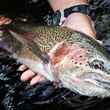





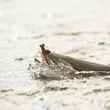
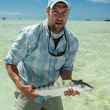



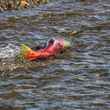
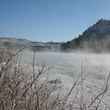




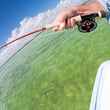






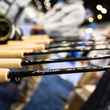

Comments
Doggie replied on Permalink
Like the oyster story, lots to be done there. But in reference to the misconception of effects on storms from present day climate change( which has always been changing), the IPCC, along with a multitude of scientists that do not back the IPCC’s theories, all agree that storms are becoming less frequent and less severe. There is an eleven year hurricane cycle, closely tied to the sun’s cycle, that the pundits fail to mention. Check it out. It hurts articles that are otherwise great when unsubstantiated statements are thrown into the storyline. Ask questions, discover, dig deeper. And never trust the media to tell you the truth. Thanks, Kris for the article. (See? I thought it was going to be about runoff and wondered how Idaho dirt was reaching tarpon)
Pages